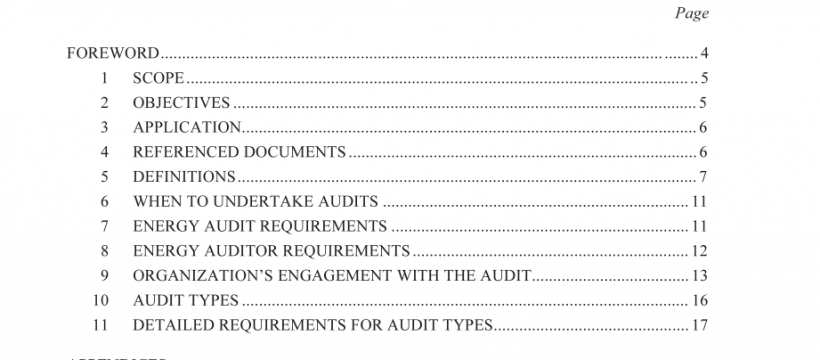AS NZS 3598.1:2014 pdf free download
AS NZS 3598.1:2014 pdf free download.Energy audits
10.4 Type 2: Detailed energy audit
Type 2 audits provide detailed analysis of energy performance to quantify the full range of opportunities for a site. Type 2 defines a detailed level of audit involving a comprehensive review and analysis of equipment, systems, and operational characteristics of the whole building to enable quantified energy savings recommendations.
Type 2 audits are required to include financial analysis of recommended energy performance improvement actions based on agreed financial criteria to rank opportunities (see Paragraph B2). The accuracy of costs and savings should generally be sufficient for operational expenditures or medium- scale capital investments, and should be commensurate with organization’s approval processes for expenditures at those levels.
Type 2 audits may include on-site measurements but would not normally involve the installation of additional monitoring equipment. As a result, some major projects or opportunities may require further investigation beyond the scope of the audit to fully quantify the energy performance improvements, costs and benefits. Such work may become the brief for a Type 3 audit as described in Clause 10.5. Type 2 audits calculate energy savings by reconciling against the end-use breakdown, considering daily energy consumption profiles. Costs of implementation are based on a build-up of both capital and labour items including site, internal and project management costs. Type 2 audit requirements provide costs and benefits to a medium level of accuracy [see Clause 5.1(b)].
10.5 Type 3: Precision subsystem audit
Type 3 audits are detailed audits of specific subsystems, with additional data gathering and measurement to provide a higher level of accuracy, see Clause 5.1(c). Audits of this type are typically focused on a process or subsystem level, such as for HVAC, building management systems, compressed air or lighting, rather than the whole building. Type 3 audits involve onsite measurements to monitor energy data over a period long enough to capture the various operating conditions and relevant variables which require their own set of measurements in order to quantify the business case for energy saving measures more accurately than is possible under a Type 2 audit.
AS NZS 3598.1:2014 pdf free download
